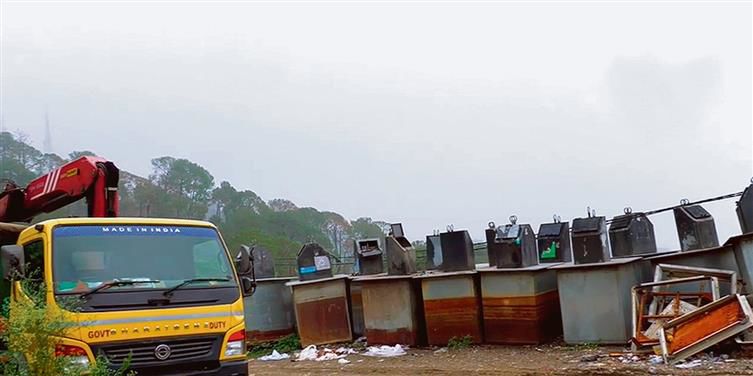Swachh ranking: From No. 1, Dharamsala down 34 rungs
Raghav Guleria
Dharamsala, July 5
Dharamsala’s first position in hygiene among the 60 Urban Local Bodies (ULBs) of the state has dropped to 35th, courtesy the underground dustbins that were installed in a haste.
Unmindful of the ground realities and showing total disregard to the wisdom earned in generations, a team of elected members and officials of the Dharamsala Municipal Corporation visited Holland to import a facility which was not suitable for the local conditions.
A model, catering to a meagre population of 3,000, was imported for a town having population in lakhs. There was a lot of drum beating in support of this ‘state-of-the-art’ facility which, according to the officials, would have resulted in keeping the town spick and span.
Talking to The Tribune, present Mayor Neenu Sharma said, “In 2016, the decision to install this facility was taken at the Director-level and the then MLA, Sudhir Sharma, also played an important role as the Minister for Urban Development in securing these dustbins for the city. Dharamsala was to be the first city in India to have sensor-based underground dustbins and it was said that these dustbins, connected with GPS, would pass on the information through satellites to the command stations for timely upkeep.”
As per the agreement with Zonta Infratech, the underground dustbins were installed at 140 locations for a sum of Rs 13 crore. In a sheer wastage of taxpayers’ money, two highly expensive crane-mounted tippers were also purchased to operate these dustbins, which have turned into junk today.
Since Dharamsala receives record precipitation, the underground dustbins proved to be a failure, especially in marshy areas like Dari and Sidhbari where the groundwater is close to the earth’s surface. Also, at many locations there were electric wires and transformers installed near the dustbins, making it impossible for the cranes to lift these.
There were a large number of complaints from residents, who were living in close proximity to these dustbins, as they were faced with a major health hazard. Senior citizens and elected body members had also lodged a strong protest against the facility.









